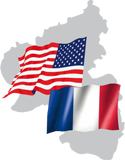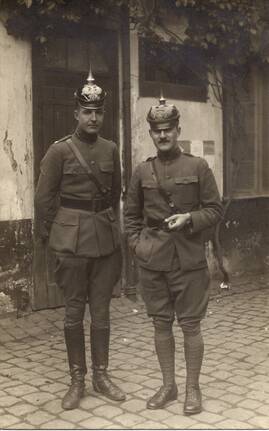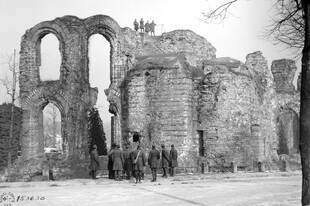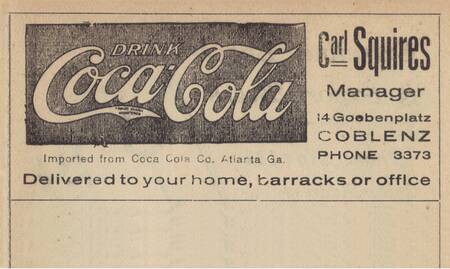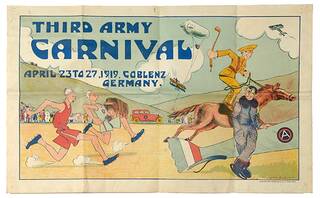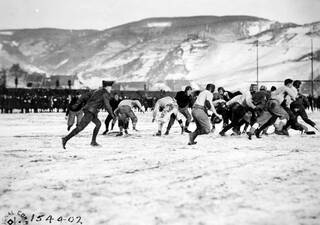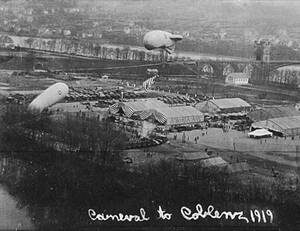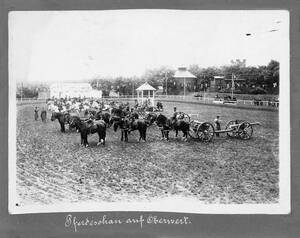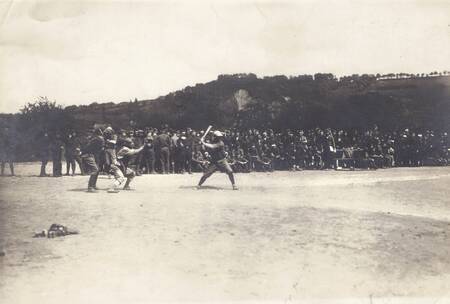Cultural Exchange – Meeting the Enemy
The period of American occupation was also a phase of intercultural exchange between the two nations. The Americans enjoyed classical music, theater plays and cultural events, which contradicted the impressions they had acquired through wartime propaganda. The Germans were introduced to American customs, such as horse shows, square dance and rodeos, or the regularly-held military band concerts presented in public areas, so that local Germans could hear a very different type of military music.
Certain customs were common amongst both, which is why it was no surprise that a large Christmas tree was erected in front of the American headquarters building in Koblenz, and that later, the Doughboys presented gifts to local children. Other holidays such as Thanksgiving, St. Patrick’s Day and the 4th of July were widely unknown amongst Germans, although they enjoyed the huge fireworks presented above Ehrenbreitstein Fortress on Independence Day. Many of the Catholic traditions of the Rhineland, such as Easter, Pentecost and Corpus Christi processions, were just as strange to the Americans.
River cruises and sight-seeing trips provided by the Y.M.C.A. managed to show the Doughboys many local sites including the numerous castles along Rhine and Moselle. English guide books informed the men of local history and customs. Many Americans and Doughboys had strong ties to Germany, as their ancestors had emigrated from the country over the past century. They experienced new food, such as the wide variety of potatoes, meat, and wine unique to the Rhineland. At the same time, the Americans introduced their own specialties. Many local cafés started serving pancakes, waffles or donuts. Coca-Cola was also offered for the first time in Koblenz. Intended primarily for Doughboys, by 1929 it had become so popular that the first Coca-Cola plant in Germany was opened.
Athletic activities for Doughboys were extremely important, with the Y.M.C.A. and Knights of Columbus sponsoring and providing the equipment needed. This included the construction of several sports grounds, for example on the Oberwerth Peninsula or in front of the palace in Koblenz, since football fields or baseball diamonds simply did not exist. The “Third Army Carnival,” a major 5-day sporting event, was held on the Oberwerth in April 1919, and was attended by approximately 100,000 participants and spectators. This peninsula came to be known as “Carnival Island” from then on. Various sporting activities such as horseback riding, motorized events and airplane shows were also included.
Sports were the primary means of conveying the American way of life to the Germans. Through the Doughboys, several previously unknown sports were introduced to the Rhineland, such as basketball, football, and in particular baseball. One of the first baseball diamonds in Germany was built specifically for the American soldiers by the city of Mayen as early as March of 1919. Since several professional athletes had joined the American military, a real baseball league arose. These games were covered in the “Stars and Stripes” newspaper, thus even reaching fans back home in the States. In May 1919, an Army of Occupation championship game in Neuwied was watched by several German civilians, and became regarded as the official introduction of baseball in Germany. The American national sport became quite popular in the Rhineland, and the Knights of Columbus established an umpire training school in Koblenz. Mr. William Paul Coughlin (1878–1943), “the maestro of the hidden ball trick,” a former well-known professional 3rd baseman from the National Baseball League, having played for the “Washington Senators” and later “Detroit Tigers,” became its first director.

